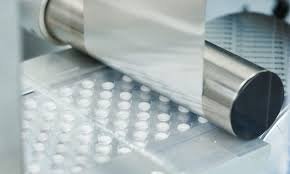SOP for Leak Test of Strip, Blister and Alu – Alu Blister Sealing

Standard Operating Procedure (SOP)
Here is a detailed Standard Operating Procedure (SOP) for the Leak Test of Strip, Blister, and Alu-Alu Blister Sealing used in pharmaceutical packaging operations.
To define the procedure for performing the leak test on strip packs, blister packs, and alu-alu blister packs to ensure the integrity of the sealing and packaging.
2. Scope
This SOP applies to the packaging area where leak testing of primary packed pharmaceutical products (strip, blister, and alu-alu blister packs) is carried out.
3. Responsibility
-
Production Operator: Collect samples and assist in testing.
-
Quality Assurance (QA) Executive: Perform and document leak tests.
-
Quality Control (QC): Investigate any test failures.
-
Packing Supervisor: Ensure test is done at prescribed intervals.
4. Materials and Equipment Required
-
Desiccator / Leak Test Apparatus / Vacuum Chamber
-
Vacuum pump
-
Water (clean and free from air bubbles)
-
Strip/blister/alu-alu blister samples
-
Timer / Stopwatch
-
Leak Test Logbook
5. Procedure
5.1 Sampling
-
Randomly collect samples from each machine at the start of packing, at every shift change, and every hour during operation.
-
Use the number of samples as per the batch/packaging record or in-house specification (e.g., 10–15 packs).
5.2 Test Method (Vacuum Leak Test – Water Immersion Method)
-
Fill the vacuum chamber (desiccator) with sufficient water to completely submerge the samples.
-
Immerse the samples (strip/blister/alu-alu) completely under water, ensuring no air is trapped inside the chamber.
-
Close the lid of the chamber tightly and apply vacuum up to 400–600 mm Hg (as per SOP or instrument capability).
-
Maintain vacuum for about 10–15 minutes.
-
Observe the samples for any continuous stream of air bubbles coming from the cavities/seals.
-
Release the vacuum slowly and remove the samples.
-
Dry the tested samples using a lint-free cloth or allow to air dry.
5.3 Acceptance Criteria
-
No continuous stream of air bubbles should be observed.
-
A passing sample indicates that the sealing is intact and leak-proof.
-
If any sample fails, hold the lot and initiate an investigation as per deviation control procedures.
6. Frequency of Testing
7. Documentation
-
Record results in the Leak Test Logbook or Batch Packaging Record (BPR).
-
Include date, time, batch number, machine number, result (pass/fail), and name/signature of the person performing the test.
8. Precautions
-
Ensure no trapped air in the vacuum chamber before applying vacuum.
-
Handle the packs gently to avoid mechanical damage.
-
Maintain water cleanliness and replace if cloudy or contaminated.
-
Do not use packs tested for leak test for market distribution.
9. Abbreviations
-
SOP – Standard Operating Procedure
-
QA – Quality Assurance
-
QC – Quality Control
-
BPR – Batch Packaging Record
-
mm Hg – Millimeters of Mercury (vacuum pressure)
🎓 Discover one of the best Pharmaceutical Production courses available — click below to explore the course that’s shaping future Production skills.
https://trcjw.on-app.in/app/oc/338669/trcjw


